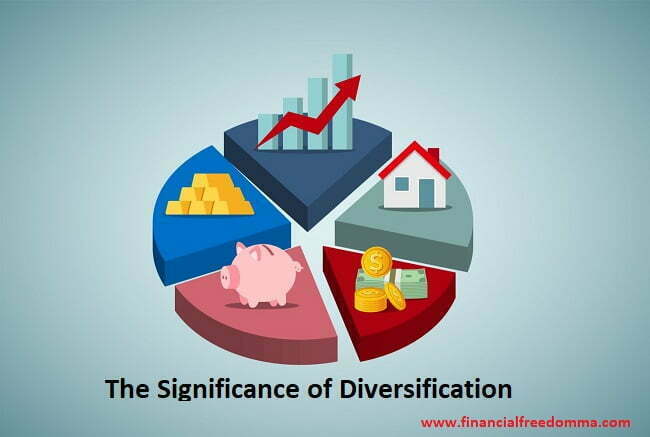Benefits of Diversification, What do you mean by diversification?, What are the benefits of diversification?, Reducing Risk Exposure , Capitalizing on Different Market Conditions
Diversification is a fundamental concept in the world of finance and investment. It refers to the strategy of spreading your investments across different assets to manage risk and potentially enhance returns. In this article, we will delve deep into the concept of diversification, understanding its importance, benefits, and how you can effectively implement it in your investment portfolio.
Introduction
In the dynamic world of finance, the old saying “Don’t put all your eggs in one basket” holds true. Diversification is the practice of not relying on a single investment, but rather spreading your funds across various assets. This strategic approach aims to minimize the impact of poor performance in one area by having exposure to others that might perform differently under the same circumstances.

1. The Significance of Diversification
Diversification serves as a safeguard against potential losses that can arise from market volatility. It is like a safety net that cushions your portfolio against unforeseen economic or industry-specific setbacks. By holding a mix of assets, you can reduce the risk of a significant downturn affecting your entire investment.
2. Benefits of Diversification
Reducing Risk Exposure
Diversification lowers the risk associated with investing in a single asset. If one investment underperforms, the others may counterbalance the losses, thereby minimizing the overall impact on your portfolio.
Maximizing Potential Returns
While diversification is primarily a risk management strategy, it also offers the potential for enhanced returns. When one asset category experiences strong growth, it can offset losses or moderate gains in other areas.
Capitalizing on Different Market Conditions
Different types of assets respond differently to economic conditions. By diversifying your portfolio, you position yourself to benefit from various market scenarios, whether it’s a bull market, bear market, or a period of economic uncertainty.
3. Implementing Diversification Strategies
Asset Allocation
Determining the right mix of asset classes – such as stocks, bonds, and cash equivalents – is crucial. The proportion you allocate to each asset class should align with your risk tolerance, financial goals, and investment horizon.
Industry Allocation
Diversifying within industries further mitigates risk. Various sectors, like technology, healthcare, and energy, can perform differently based on industry-specific factors and trends.
Geographical Diversification
Investing across different regions and countries can protect your portfolio from the risks associated with a particular geographic location. Global economic events may impact regions differently, and diversification can provide insulation.
Investment Vehicles
Within each asset class, explore various investment options. For example, when dealing with stocks, consider a blend of single stocks, exchange-traded funds (ETFs), and mutual funds.
4. Factors to Consider
Risk Tolerance
Assess your willingness to tolerate risk. Diversification should align with your comfort level and financial circumstances.
Investment Goals
Your investment objectives – whether it’s long-term growth, income, or capital preservation – should drive your diversification strategy.
Time Horizon
Consider how long you plan to keep your investments. Longer time horizons may allow for a more aggressive diversification approach.
5. Monitoring and Rebalancing Your Portfolio
Diversification is not a one-time task. Regularly review and rebalance your portfolio to ensure it stays aligned with your goals and risk tolerance. Over time, some assets may outperform, causing your portfolio to deviate from your original allocation.
6. Real-Life Examples of Diversification Success
During the financial crisis of 2008, diversified portfolios that included a mix of stocks, bonds, and alternative investments fared better than those heavily concentrated in a single asset class.
7. Diversification vs. Concentration
Contrasting the benefits and risks of diversification against concentrating your investments can provide valuable insights into crafting a well-rounded portfolio.
8. Common Mistakes to Avoid
Over-Diversification
While diversification is essential, over-diversifying by holding too many assets can lead to complexity and potential underperformance.
Neglecting Research
Blindly diversifying without thorough research can expose you to poor-performing assets.
Ignoring Changing Market Dynamics
Market conditions evolve. Failing to adjust your diversification strategy accordingly could impact your returns.
9. The Evolving Landscape of Diversification
As financial markets and investment opportunities change, diversification strategies also adapt. Stay informed about emerging trends.
Conclusion
Diversification is a cornerstone of prudent investing. By intelligently spreading your investments, you can navigate the unpredictable waters of the financial markets more confidently.
FAQs
Q1: How many different assets should I ideally hold in a diversified portfolio?
Ans: The ideal number of assets in a diversified portfolio can vary, but experts often recommend a range of 12 to 20 different assets. This level of diversification can help minimize the impact of poor-performing investments.
Q3: Can I diversify within a single asset class, such as stocks?
Ans: Yes, diversification within a single asset class is possible and encouraged. Investing in various stocks from different industries and sectors can help reduce risk within that asset class.
Q3: What role does risk tolerance play in diversification?
Ans: Risk tolerance guides your investment decisions and determines the mix of assets in your portfolio. A higher risk tolerance may lead to a more aggressive allocation, while a lower risk tolerance could lean towards a conservative mix.
Q4: Is diversification a guarantee against losses?
Ans: No, diversification does not guarantee complete protection against losses. It aims to mitigate risk, but all investments carry some level of risk, and the market can be unpredictable.
